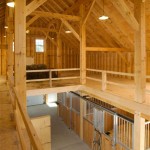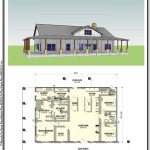Walk-In Pantry Design Plans: A Comprehensive Guide to Optimizing Storage
A well-designed walk-in pantry is a coveted feature in any home, offering ample storage space for food, kitchenware, and other household essentials. Whether you're renovating your existing pantry or planning a new one, careful planning is crucial for maximizing its functionality and aesthetics.
Step 1: Determine Your Needs Start by assessing your storage requirements. Consider the types of items you need to store, their approximate quantities, and the frequency of use. This will help you determine the overall size and layout of the pantry.
Step 2: Choose a Location The pantry should be conveniently located near the kitchen, but not directly in its immediate vicinity. A dedicated room or a discreet area off the kitchen works well. Ensure there's adequate natural or artificial lighting.
Step 3: Establish a Floor Plan Plan the layout of the pantry, considering the flow of movement and accessibility. Typically, U-shaped or parallel walls with shelves on both sides maximize space utilization. Include aisles wide enough for comfortable navigation.
Step 4: Design Shelving Shelves are the backbone of a walk-in pantry. Choose durable materials such as plywood or wire mesh. Vary the shelf heights and depths to accommodate different-sized items. Open shelves allow for easy visibility and access, while adjustable shelves provide flexibility.
Step 5: Add Lighting Proper lighting is essential for visibility and safety. Consider recessed lighting, under-shelf lighting, or motion-activated lights for convenience. Natural lighting through windows is also beneficial.
Step 6: Incorporate Storage Solutions Maximize space with specialized storage solutions such as pull-out drawers, sliding baskets, and lazy Susans. These enhance accessibility and keep items organized. Hooks and magnetic strips can be used to hang utensils and other small items.
Step 7: Consider Appliances If space permits, consider integrating appliances such as a refrigerator, freezer, or microwave oven into the pantry. This adds convenience and makes it a self-contained food storage area.
Step 8: Personalize the Design Make the pantry your own by incorporating personal touches. Add a chalkboard for notes or a pegboard for organizing keys and mail. Consider wallpaper or paint that reflects your style.
Step 9: Maintain Organization To keep your pantry functional, regular organization is vital. Label shelves, use bins and baskets, and implement FIFO (first in, first out) principles to prevent expired items from lingering.
By following these comprehensive design plans, you can create a walk-in pantry that seamlessly integrates with your home and enhances your storage capabilities. Remember to tailor the designs to your specific needs and preferences to create a truly practical and stylish space.

Walk In Pantry Plans A Thoughtful Place

20 Walk In Pantry Ideas For Stylish Kitchen Storage

How To Maximize Your Walk In Pantry Space

Walk Pantry Joy Studio Design Jhmrad 143618

Walk In Pantry Plans A Thoughtful Place

How To Maximize Your Walk In Pantry Space

20 Walk In Pantry Ideas For Stylish Kitchen Storage

Walk In Pantry Design Rules

How To Maximize Your Walk In Pantry Space

Walk In Pantries Your Ultimate Kitchen Upgrade








